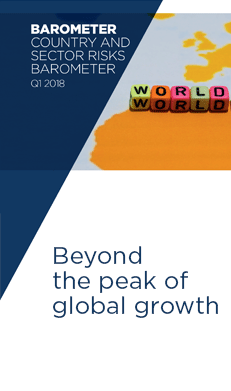Challenging times for homebuilders and real estate companies

It is no secret that the construction and real estate sectors are among the most cyclical sectors, sensitive to changes in the labour market, prices in commodities and, first and foremost, the interest rate environment and accessibility of credit. It is therefore no surprise that these sectors are currently under strain as interest rates have risen quickly, resulting in dwindling demand from both households and real estate companies. However, the latter are also frequently very leveraged, making turning a profit difficult in this landscape. The abrupt rise in interest rates also comes at an unfortunate time, as house prices and valuations rose quickly in late 2020 and 2021 while people were upscaling and interest rates were low. This means that several homebuyers and real estate companies took on much debt in the past few years that is now often – at least – twice as expensive as a year earlier.
2024 will therefore be a mixed year, with most actors in the construction and real estate sectors expecting it to bring some relief in the form of falling interest rates and less volatile commodity and energy prices. However, for many it will be a year of survival as the global economy is slowing down (Coface is forecasting global GDP growth to fall from +2.6% in 2023 to 2.2% in 2024, the lowest in a non-crisis year – 2009 and 2020 – since 2008), especially in the United States, labour markets are cooling, and financial conditions are tight. The latter point is very important as global debt stood around USD 307 trillion (333% of GDP) in the third quarter of 2023 with USD 149 trillion owed by households and non-financial companies, and those who need to refinance will be facing far higher interest costs, even with easing policy rates.
Signs of cracks are already evident. Corporate insolvencies within the construction sector have already risen by at least 20% year-to-date in 2023 compared with 2022 in Australia, Canada, France, Germany and Japan. Furthermore, commercial property prices are down almost 25% from their peak in the United States and Europe, and net profit margins of home construction and real estate companies have tentatively fallen in every quarter in 2023. In this context, the question is if the expected policy rate cuts will be sufficient and in due time to stabilise a weakening market.
The real estate market is still navigating a delicate balance between rising interest rates and a limited housing supply. Although house prices have adjusted somewhat to higher rates, the persistent supply constraints – caused by prospective sellers’ unwillingness to move from their low mortgage rates or sell at a lower price – have kept them buoyant. However, from a demand perspective, it is expected that prices should decline in most advanced economies, particularly Germany, Japan and Italy. This conclusion is derived from a pricing model where housing is viewed as an investment. However, simple approximations of ratios between house prices and average rent or income levels having to return to their pre[1]pandemic levels also suggests a probable downwards correction in housing prices.




